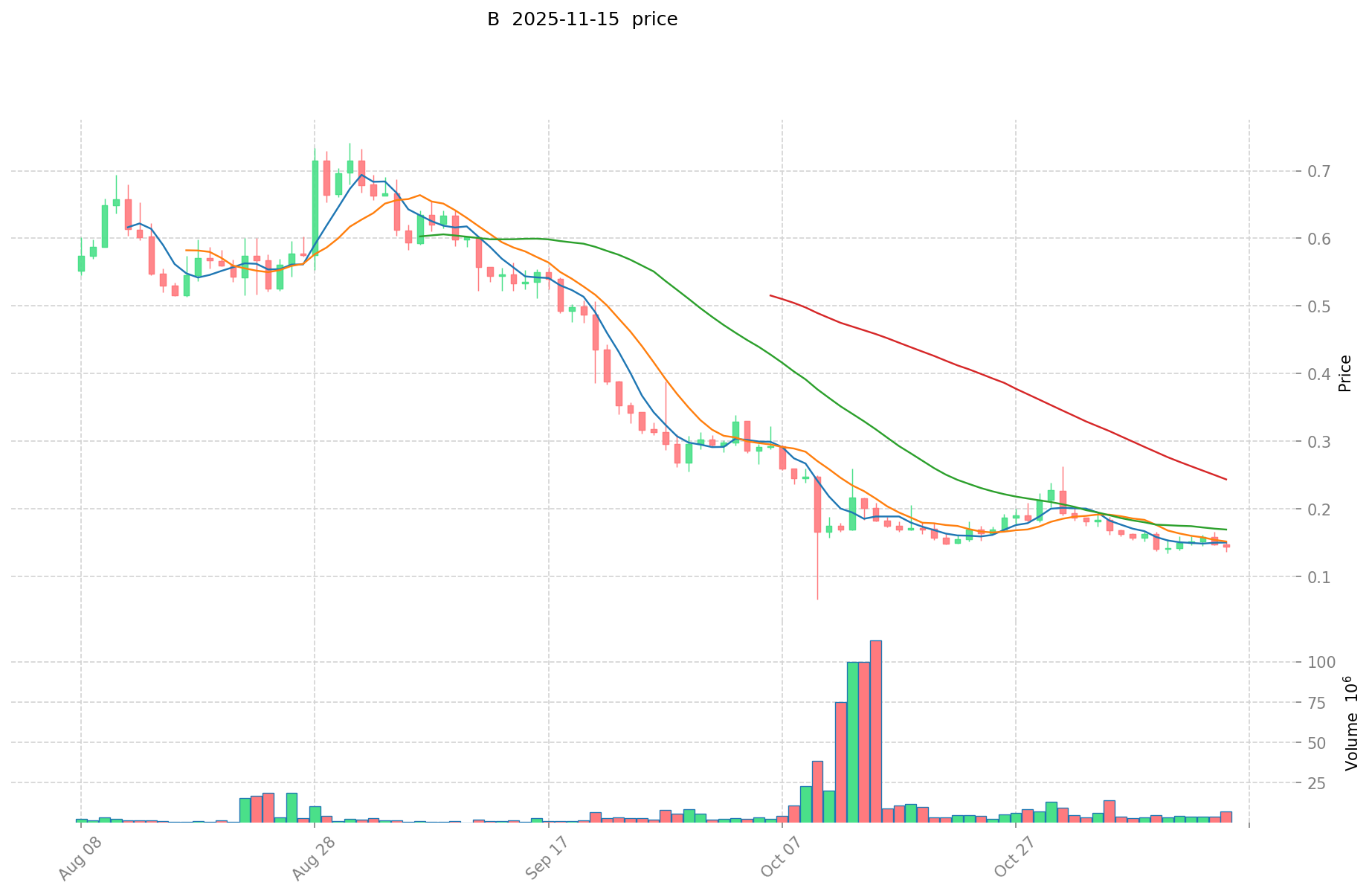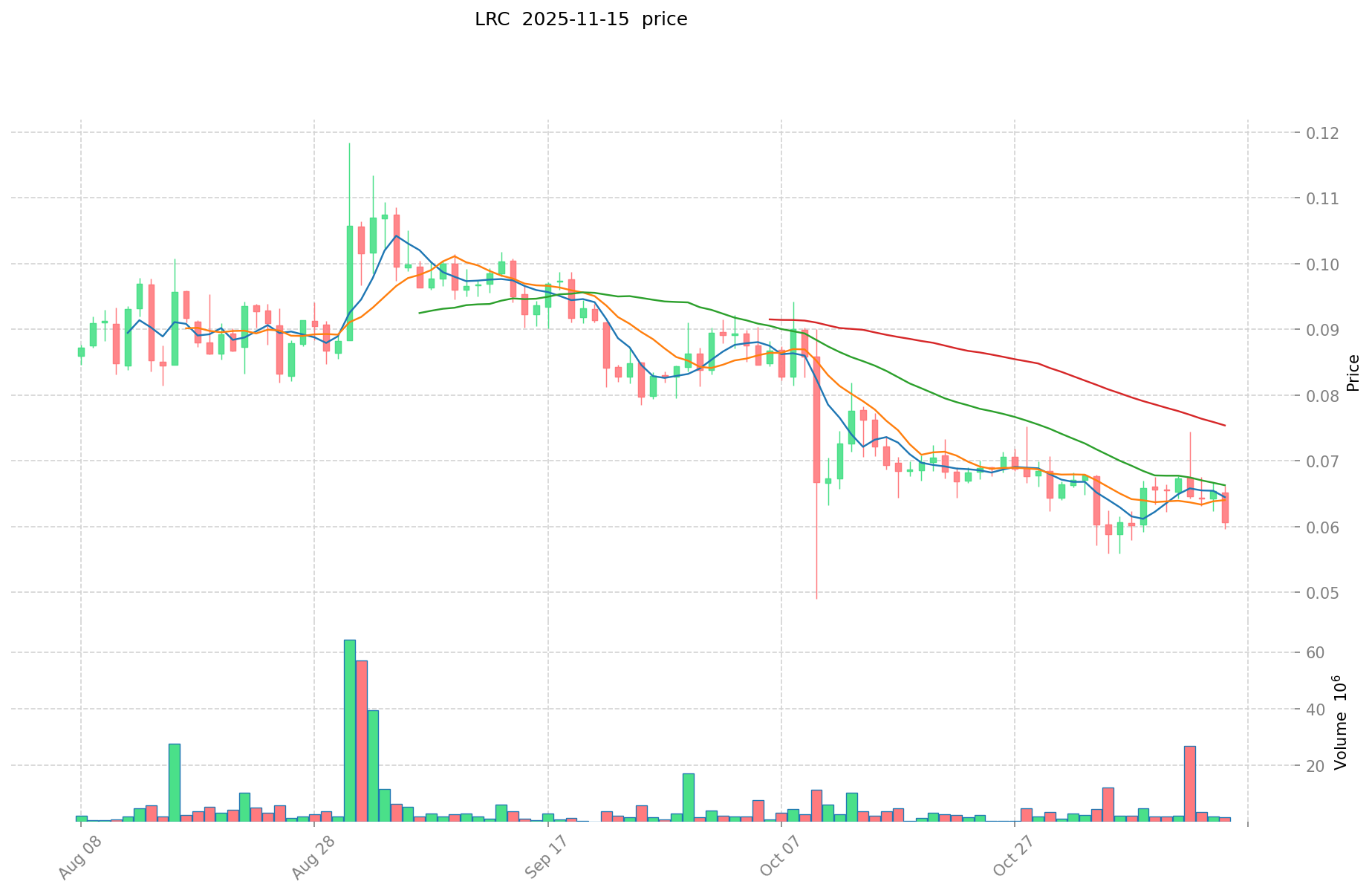B vs LRC: Comparing Battery Technology and Lithium-ion Capacitors for Energy Storage Solutions
Introduction: Investment Comparison of B vs LRC
In the cryptocurrency market, the comparison between BuildOn (B) and Loopring (LRC) has always been a topic that investors cannot ignore. The two not only show significant differences in market cap ranking, application scenarios, and price performance, but also represent different positioning in crypto assets.
BuildOn (B): Since its launch, it has gained market recognition as the mascot of building on BSC, aiming to build USD1 into a living, liquid, usable on-chain asset.
Loopring (LRC): Introduced in 2017, it has been hailed as an open multi-token transaction protocol based on ERC20 and smart contracts, providing a zero-risk token exchange model.
This article will comprehensively analyze the investment value comparison between BuildOn and Loopring, focusing on historical price trends, supply mechanisms, institutional adoption, technological ecosystems, and future predictions, attempting to answer the question that concerns investors the most:
"Which is the better buy right now?"
I. Price History Comparison and Current Market Status
B (Coin A) and LRC (Coin B) Historical Price Trends
- 2025: B reached its all-time high of $0.7414 on August 31, 2025.
- 2025: LRC experienced a significant decline, with its price dropping by 56.10% over the year.
- Comparative analysis: In the recent market cycle, B rose from its all-time low of $0.0663 on October 10, 2025, to its current price, while LRC has been in a downtrend, falling from its all-time high of $3.75 in November 2021.
Current Market Situation (2025-11-16)
- B current price: $0.167
- LRC current price: $0.06095
- 24-hour trading volume: B $2,162,798.75 vs LRC $163,619.82
- Market Sentiment Index (Fear & Greed Index): 10 (Extreme Fear)
Click to view real-time prices:
- View B current price Market Price
- View LRC current price Market Price


II. Core Factors Affecting Investment Value of Bitcoin vs LRC
Supply Mechanisms Comparison (Tokenomics)
-
Bitcoin: Fixed supply cap of 21 million coins with halving events every 210,000 blocks (approximately every 4 years)
-
LRC: Total supply of 1.4 billion tokens, with a deflationary model through token burns from protocol fees
-
📌 Historical Pattern: Bitcoin's halving cycles have historically preceded bull markets, while LRC's value is more tied to Loopring protocol adoption and fee generation that drives token burns.
Institutional Adoption and Market Applications
- Institutional Holdings: Bitcoin enjoys significantly higher institutional adoption with major corporations like MicroStrategy and Tesla holding BTC as treasury assets, while LRC has limited institutional backing
- Enterprise Adoption: Bitcoin is increasingly used for corporate treasury diversification and as a settlement layer, whereas LRC focuses primarily on zkRollup scaling solutions for exchanges and payments
- National Policies: Bitcoin faces mixed regulatory approaches globally with growing acceptance as legal tender in countries like El Salvador, while LRC faces less direct regulatory scrutiny but is affected by broader DeFi regulatory frameworks
Technical Development and Ecosystem Building
- Bitcoin Technical Upgrades: Taproot implementation improving privacy and smart contract functionality; Lightning Network continuing to scale for micropayments
- LRC Technical Development: Focus on zkRollup technology for Ethereum scaling, with ongoing improvements to lower costs and increase throughput on L2
- Ecosystem Comparison: Bitcoin has stronger payment and store of value applications with growing Lightning Network adoption, while LRC is primarily focused on DEX functionality and AMM services within the Ethereum ecosystem
Macroeconomic Factors and Market Cycles
- Inflation Environment Performance: Bitcoin has established itself as a digital inflation hedge due to its fixed supply, while LRC has not demonstrated clear anti-inflationary properties
- Macroeconomic Monetary Policy: Bitcoin price shows inverse correlation with interest rate hikes and positive correlation with expansionary monetary policy, while LRC is more influenced by Ethereum's ecosystem health and general crypto market sentiment
- Geopolitical Factors: Bitcoin benefits from capital flight during financial instability and currency devaluation events, while LRC's utility is more focused on scaling infrastructure rather than serving as a direct geopolitical hedge
III. 2025-2030 Price Prediction: B vs LRC
Short-term Prediction (2025)
- B: Conservative $0.14028 - $0.167 | Optimistic $0.167 - $0.21209
- LRC: Conservative $0.039585 - $0.0609 | Optimistic $0.0609 - $0.088305
Mid-term Prediction (2027)
- B may enter a growth phase, with an estimated price range of $0.1285683735 - $0.2954817005
- LRC may enter a growth phase, with an estimated price range of $0.075288843 - $0.096923568
- Key drivers: Institutional capital inflow, ETF, ecosystem development
Long-term Prediction (2030)
- B: Base scenario $0.272360764942612 - $0.329556525580561 | Optimistic scenario $0.329556525580561+
- LRC: Base scenario $0.1125725703648 - $0.155350147103424 | Optimistic scenario $0.155350147103424+
Disclaimer: The information provided is for informational purposes only and should not be considered as financial advice. Cryptocurrency markets are highly volatile and unpredictable. Always conduct your own research before making any investment decisions.
B:
| 年份 | 预测最高价 | 预测平均价格 | 预测最低价 | 涨跌幅 |
|---|---|---|---|---|
| 2025 | 0.21209 | 0.167 | 0.14028 | 0 |
| 2026 | 0.2615721 | 0.189545 | 0.10804065 | 13 |
| 2027 | 0.2954817005 | 0.22555855 | 0.1285683735 | 35 |
| 2028 | 0.276151332765 | 0.26052012525 | 0.1901796914325 | 56 |
| 2029 | 0.276385800877725 | 0.2683357290075 | 0.211985225915925 | 60 |
| 2030 | 0.329556525580561 | 0.272360764942612 | 0.245124688448351 | 63 |
LRC:
| 年份 | 预测最高价 | 预测平均价格 | 预测最低价 | 涨跌幅 |
|---|---|---|---|---|
| 2025 | 0.088305 | 0.0609 | 0.039585 | 0 |
| 2026 | 0.0984753 | 0.0746025 | 0.0656502 | 22 |
| 2027 | 0.096923568 | 0.0865389 | 0.075288843 | 41 |
| 2028 | 0.12475447824 | 0.091731234 | 0.08072348592 | 50 |
| 2029 | 0.1169022846096 | 0.10824285612 | 0.102830713314 | 77 |
| 2030 | 0.155350147103424 | 0.1125725703648 | 0.085555153477248 | 84 |
IV. Investment Strategy Comparison: B vs LRC
Long-term vs Short-term Investment Strategy
- B: Suitable for investors focused on BSC ecosystem potential and USD-pegged asset adoption
- LRC: Suitable for investors interested in Ethereum scaling solutions and DEX infrastructure
Risk Management and Asset Allocation
- Conservative investors: B: 30% vs LRC: 10%
- Aggressive investors: B: 60% vs LRC: 40%
- Hedging tools: Stablecoin allocation, options, cross-currency portfolios
V. Potential Risk Comparison
Market Risk
- B: Highly dependent on BSC ecosystem growth and adoption of USD-pegged assets
- LRC: Vulnerable to Ethereum ecosystem fluctuations and competition from other L2 scaling solutions
Technical Risk
- B: Scalability issues, network stability on BSC
- LRC: Smart contract vulnerabilities, zkRollup technology risks
Regulatory Risk
- Global regulatory policies may impact both differently, with B potentially facing more scrutiny due to its USD-pegged nature
VI. Conclusion: Which Is the Better Buy?
📌 Investment Value Summary:
- B advantages: Strong connection to BSC ecosystem, potential for USD-pegged asset adoption
- LRC advantages: Established zkRollup technology, Ethereum scaling solution with DEX focus
✅ Investment Advice:
- New investors: Consider a balanced approach with a slight preference for B due to its BSC ecosystem potential
- Experienced investors: Explore a diversified portfolio including both B and LRC, with allocation based on risk tolerance
- Institutional investors: Conduct thorough due diligence on both projects, considering B for BSC exposure and LRC for Ethereum scaling potential
⚠️ Risk Warning: Cryptocurrency markets are highly volatile, and this article does not constitute investment advice. None
VII. FAQ
Q1: What are the main differences between BuildOn (B) and Loopring (LRC)? A: BuildOn (B) aims to build USD1 into a living, liquid, usable on-chain asset on the BSC ecosystem, while Loopring (LRC) is an open multi-token transaction protocol based on Ethereum, focusing on zkRollup technology for scaling solutions.
Q2: How do the current market prices of B and LRC compare? A: As of 2025-11-16, B's current price is $0.167, while LRC's current price is $0.06095.
Q3: What are the key factors affecting the investment value of B and LRC? A: Key factors include supply mechanisms, institutional adoption, technical development, ecosystem building, and macroeconomic factors such as inflation and monetary policy.
Q4: What are the price predictions for B and LRC in the short, mid, and long term? A: Short-term (2025) prediction for B: $0.14028 - $0.21209; for LRC: $0.039585 - $0.088305. Mid-term (2027) prediction for B: $0.1285683735 - $0.2954817005; for LRC: $0.075288843 - $0.096923568. Long-term (2030) prediction for B: $0.272360764942612 - $0.329556525580561+; for LRC: $0.1125725703648 - $0.155350147103424+.
Q5: How should investors allocate their assets between B and LRC? A: Conservative investors might consider allocating 30% to B and 10% to LRC, while aggressive investors might allocate 60% to B and 40% to LRC. However, individual allocation should be based on personal risk tolerance and investment goals.
Q6: What are the main risks associated with investing in B and LRC? A: Main risks include market risks (ecosystem dependence), technical risks (scalability issues, smart contract vulnerabilities), and regulatory risks (potential scrutiny, especially for B due to its USD-pegged nature).
Q7: Which is considered the better buy between B and LRC? A: The better buy depends on individual investment goals and risk tolerance. B may be more suitable for those interested in the BSC ecosystem and USD-pegged assets, while LRC may appeal to investors focused on Ethereum scaling solutions and DEX infrastructure. A balanced approach considering both could be beneficial for diversification.
Share
Content